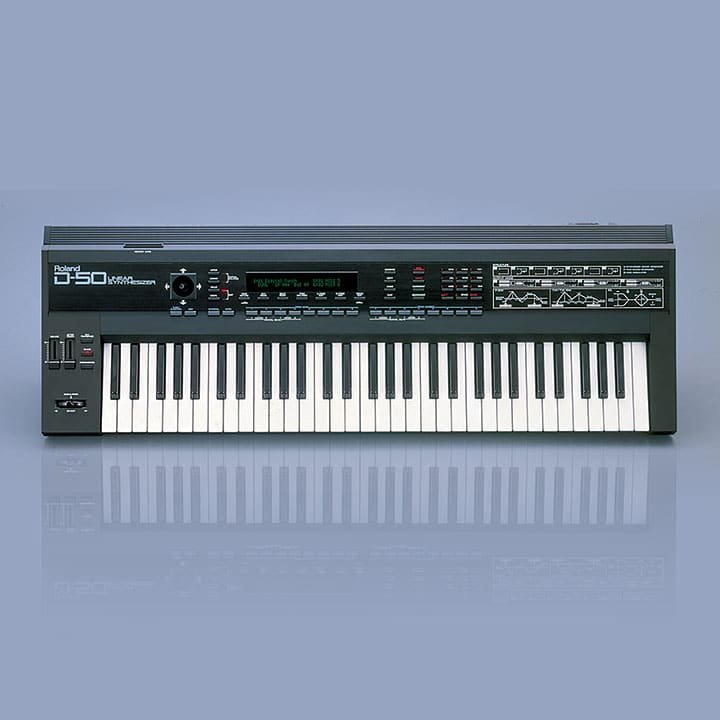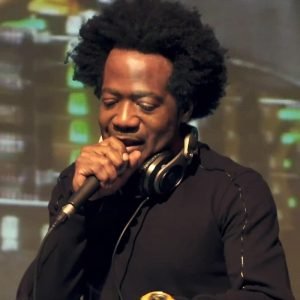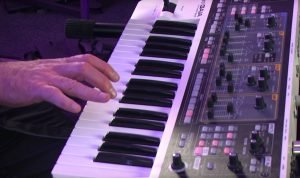![]()
The Roland Icon Series is a collection of articles looking back at the most popular and recognized Roland instruments. In over four decades, Roland has designed many world-first instruments, like the first touch-sensitive keyboard and first guitar synthesizer.
Previous articles in the Roland Icon Series revisited the classic Roland Jupiter-8, the Juno-106, the SH-101, the MRS-2 ProMars, the SH-2 Monophonic Synthesizer and the SYSTEM-100. This article looks at the eminent Roland D-50.
Contributed by Hannah Lockwood for the Roland Australia Blog
MOVING FORWARD
The late 1970s and early 1980s saw Roland pioneering synth design with a now legendary range of monophonic, modular and polyphonic analog synthesizers. These include the aforementioned SH, System, MRS, Jupiter and Juno series. Analog reigned supreme, but the cost and inherent limitations encouraged a evolution in synth design.
Engineers had been experimenting with computer-generated music since the 1950s. However, it was the 1980s that marked a massive revolutionary shift in synthesizer design, bringing digital synths to the consumer market. Signs of a digital revolution at Roland began to show with the release of the Juno-6 polyphonic synthesizer in 1982. Newly developed Digitally Controlled Oscillators (DCO) provided a cheaper and more stable alternative to the Voltage Controlled Oscillators of synthesizers past. By 1986, further innovation in the world of digital synths had brought about the famed FM style of synthesis, which produced futuristic, cutting-edge sounds.
Roland’s entry into the digital keyboard world came not through synthesizers, but samplers and pianos. The development of a resynthesis system called SAS (Structured/Adaptive Synthesis) extended the simple sample-playback system of previous years. To develop SAS, the timbre of various instruments, primarily acoustic pianos, were sampled and analyzed by Roland engineers at a multitude of varying pitches and volumes. An algorithm was developed to resynthesize the necessary harmonics and noises of each note as it was played, allowing for incredible accuracy and clarity. Roland also released two further sample modules in the form of the S550 and the MKS220.
While SAS had many strengths, it also used a great deal of ROM for storage. Recognizing the limitations of non-linear techniques like FM, Roland began to work on a digital synthesizer that would create exciting and realistic sounds, and could be edited with a degree of ease.
The Sample and Synthesis (S&S) technique, found on the Roland JV, XP and XV instruments, represented a thoughtful new approach to synth design. Using digital recordings rather than oscillators, samples were mapped across the keyboard and pitch was dictated by the speed of playback.
LA SYNTHESIS & THE D-50
LA (Linear Arithmetic) Synthesis marked a new direction for Roland. Using the principles of analog synthesis within the digital sphere, Roland engineers used samples extracted from the Attack portions of real instruments before the synthesized waveforms, to create fuller and more realistic sounds. The addition of samples broadened the range of synthesized possibilities and musicians could now accurately reproduce acoustic sounds in a way that was previously impossible with analog synthesizers.
On its release, the D-50 marked the latest evolution in a long line of continuous development and innovation from Roland. It was a time when digital synths were affordable and accessible to all. These sleek keyboards offered a vast new range of sounds, with a flexibility and voice architecture that was not possible in previous analog designs. It could sound futuristic, beautifully subtle and nuanced, and offered a cut-throat clarity tempered with the spirit of the analog greats that preceded it.

Released in 1987, the D-50 was Roland’s first all-digital performance keyboard synthesizer. It combined sampled attack transients and synthesized waveforms for a groundbreaking new technique that shaped digital synth design. The D-50 simultaneously increased the accuracy and clarity of synth sounds, while also expanding on the possibilities of sampling.
When it reached the market in ’87, it became one of the most popular and vital synthesizers of the time, working to define the sound of the late 80s with its unique and instantly recognizable combination of sampled attacks, synthesized sustaining waveforms, EQ, chorus, and reverb.
For many, the D-50 removed the fear of programming that plagued previous digital synths and marked a new chapter in the history of digital synthesis. It improved upon the control, performance and editing capabilities that previous digital synthesizers.
This shift in sound was hugely influential on the music of the time – crisp clarity, high definition and sharp transients replaced the voltage controlled and chorused analog oscillators of the past. The future had truly arrived.
5 KEY FEATURES
The D-50 offered outstanding features to achieve its character sound.
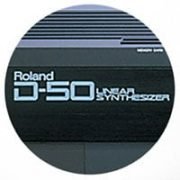 1. LA SYNTHESIS – HYBRID SOUND
1. LA SYNTHESIS – HYBRID SOUND
This new style of synthesis marked a milestone in synth design – a purely linear system that utilized the power of technology and innovation to generate a new degree of sounds. The addition of samples to an already complex digital synth engine gave musicians the power to accurately reproduce acoustic sounds in a way that was previously impossible. This flexibility, clarity and attention to detail set the D-50 apart from all other synths of the time.
 2. PATCH PRESETS
2. PATCH PRESETS
The presets featured in the D-50 were key in articulating the sonic possibilities of the instrument to the consumer. Created by Adrian Scott and Eric Persing, these patches became renowned by home users and musicians alike, and can be found on many seminal records from the late 80s until this day. From jazzy guitar, organs, vibraphones, strings and a huge range of sounds and unusual sound FX, the D-50 was a milestone in synth programming. Patches like Fantasia went on to become legends in their own right, inspiring generations of producers, musicians and film goers.
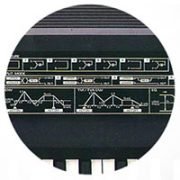 3. ONBOARD EFFECTS
3. ONBOARD EFFECTS
The D-50 was one of the first commercial synthesizers to offer an onboard digital reverb and chorus. These effects further heightened the range of realistic and futuristic sounds that the instrument could create, taking it to a new level of sonic power. Each effect featured a number of different variations, with the type of editable parameters usually reserved for rack effects processors. The combination of these two sections provided an easy and effective way of creating a wide range of sounds and a variety of stereo images.
4. JOYSTICK & BENDER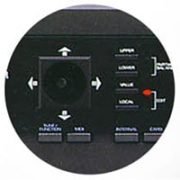
The bender, a combination of pitch wheel and vibrato switch, was a key performance element used for further expression and sound bending. The joystick was another useful performance tool and usually related to a specific set of parameters for each patch. It also worked as a tone balance controller between the Upper and Lower sections, which could be used to create delicate textures and subtle variations to a patch. The joystick could also be used to move between editable parameters in the D-50’s menu.
5. KEYS & MODES
A velocity sensitive keyboard with Aftertouch, and slightly weighted keys added a heightened performance element to the D-50. This allowed the synth to become a central part of many keyboard and piano players’ rigs. It also featured a number of Modes – Whole, Split, Dual and Separate – to allow for further sound manipulation and performance control. These features allowed the D-50 to become a cornerstone studio piece and a touring musicians’ central performance keyboard.
ONBOARD DETAILS
The D-50 was a programmable, polyphonic, digital linear synthesizer. With its complex voice architecture, it was able to produce an incredibly vast range of soundscapes, strings, pads, pianos, bass, flutes, leads, bells and special effects. Its diverse sonic palette and editing capabilities has continued to inspire musicians from all styles and backgrounds.
The D-50’s voice architecture could be broken down into a clear voice hierarchy. Each D-50 patch was called a TONE and there were 16 Tones available in total. Each was comprised of four individual sounds called PARTIALS and each Partial was made up of one sound generator – either a synth or PCM sample. This means you essentially had four analog-style synthesizers to work with.
The potential for ring modulation of the sources added further flexibility to the sounds. The way the Partials were layered together made up a crucial part of the D-50’s sound, and these ways of connecting were called STRUCTURES. There were seven different combinations available for sound creation.

The D-50 followed the typical signal path of a standard analog synth, with a Waveform Generator, Filter, Amplifier, two Envelopes and three LFOs for each Partial. Four digital subtractive synths, or four PCM Samples, or any combination of the two could be combined to create one extremely powerful engine.
The Waveform Generator section offered a choice between a sawtooth and square waveforms, with pulse width control. 100 onboard PCM samples – 47 samples of one-shots and 29 looped – were also featured . There were 24 additional samples that were combinations of other samples, which were used for more unusual patch effects. These PCM attack samples included a diverse range of instruments from piano, harpsichord, electric and upright bass, flutes, trombone, clarinet, violin and cello, harpsichord and percussive instruments. These samples did not use the Filter section, but featured control over Pitch and Amplifier envelopes, as though they were regular wave shapes.
Both the synth and PCM samples could be ring modulated at the output, creating further flexibility and potential for sound design. The result was a sound source that offered the sonic flexibility of a synthesizer, along with the realistic detail that came from the attack of a real instrument. This gave the D-50 the potential for more convincing replications of acoustic instruments.
The D-50’s Time-Variant Filter (TVF) featured a Low Pass Filter with adjustable frequency, cut or boost, as well as a Bandpass filter with variable Q, boost, cut and frequency. The Time-Variant Amplifier controlled the volume and dynamic tension of the sound. The Filter and Amplitude envelopes were both five-stage.

The LFOs offered a selection of triangle, sawtooth, square or random waveforms. LFO1 could be used to modulate Pitch, while Pulse Width, Level and Cutoff frequency could each be modulated by any of the three LFOs. The modulation sources on the D-50 were advanced for the time and added expression and further control for sound shaping. Threes LFOs could be assigned to the TVA, TVF, pitch EG or Pulse Width. Modulation depth could be controlled dynamically from the keyboard, heightening the D-50’s flexibility and control. The modulation rate and delay time could be set together with Sync On/Off.
Key follow could be applied to the Filter Cutoff and Pitch, creating interesting and at times, unusual sounds. Moving into minus value reversed the pitch scaling of the keyboard, so that the lowest pitch was at the top end of the keyboard. The D-50’s fractional scaling was another interesting feature. Alongside the more typical eighth and quarter-tones, other fractions like 3/8, 5/8 and 7/8 were included and produced some unique tunings. Such features further elevated the D-50 as a revolutionary and futuristic synthesizer and saw it gain popularity in Indian and Eastern musical styles.
Effects
The onboard effects were vital to the D-50s character sound and an important element in its ability to accurately recreate acoustic sounds. The built in digital reverb/delay offered the user 32 different effects types: The output section of the D-50 offered four different Output modes, which would connect the effects processor to the output in different ways, with differing stereo images and effects for each mode. The output modes were:
The output section of the D-50 offered four different Output modes, which would connect the effects processor to the output in different ways, with differing stereo images and effects for each mode. The output modes were:

- Stereo reverb applied to the mixed Upper/Lower tones
- Stereo reverb applied to the separated stereo output tones
- Reverb applied only to the Upper tone and tones are separated to the stereo output
- Reverb applied only to the Lower tone and tones are separated to the stereo output
Performance
The D-50 offered a range of control functions that could be effectively used for shaping the sound during live performance. These included a Master Volume knob, Aftertouch Control knob, Key Transpose button, Chase button and Portamento.
Velocity sensitivity (+/-50) could be individually set for each partial within a patch. The negative values reversed the sensitivity, making a hard key press result in a quieter sound. This allowed for custom tailoring to the sensitivity of the individual player’s own playing style. Velocity could also be used to alter the attack time of each sound, allowing for greater depth and realism in performance. Velocity and Aftertouch could also be used to control various features of the D-50, including Pitch Bend, Filter Cutoff, and LFO Depth.

The Chase Play function was an interesting feature that enabled the user to output the Lower Tone slightly later that the Upper Tone. Mode, Time and Level controls were available, and depending on the Chase Level and Velocity, the number of repeated delay sounds would differ. The feature was available in Dual or Whole mode, and brought a unique character to the D-50.
Edit mode provided the user with the ability to mute individual partials, vital for isolating aspects of the sounds when editing, and as a tool for live performance. Controls for further expression were presented in the form of an onboard Joystick and Bender.
Presets
An incredible array of presets offered the D-50 user a huge world of sounds, previously inconceivable with the analog predecessors of years past. 64 internal patch memories allowed for storage of all information pertaining to a specific set of Tones, accessed via the Bank and Number switches. Two additional switches – Internal and Card – could be used to select the source patch information, providing access to 128 patches.
Each patch preset held information on the patch name, the keyboard mode, the Upper and Lower Tones, Split Point, Pitch Bend amount, Portamento, Aftertouch, Hold pedal mode, Output Section controls, Chase controls and some MIDI settings.
Learn more about the creation of the D-50’s famous patches, in these insightful video interviews with Adrian Scott and Eric Persing below.
Control
The D-50 came with standard MIDI In, Out and Thru DIN sockets and basic MIDI information was set independently for each patch. While the D-50 offered MIDI on all 16 channels, its monotimbral architecture meant that only one channel at a time could be used. A global MIDI page, accessible via the MIDI button, provided control over the whole instrument. This page was used to set the basic receive MIDI channel used in Mono Mode, or to set the Omni On or Off and Local On and Off. There was also a selectable Separate Mode, which allowed for control of the Upper and Lower Tones from different MIDI channels.
Further control of the D-50 came in the form of the PG-1000 external controller. Simple faders offered control over virtually every adjustable parameter of the synth. This optional programmer unit elevated the D-50 for editing and performance. Offering 56 sliders and controlling up to 2 functions per slider, editing in the digital forum had never been so easy. It really took the D-50 to the next level as both a studio centrepiece and live instrument.
The back panel also featured one set of 1/4” audio outputs, a stereo headphone jack output, MIDI connections, and four control inputs – an expression pedal jack, external control jack, and pedal hold jack and pedal switch jack. Two of these had dedicated functions for volume and sustain, while the other two were used to program both the D-50’s sounds and MIDI controller functions.
Options for ROM and RAM cards allowed for further expansion, and eventually third-party expansion boards were released that extended the D-50’s range of sounds and facilities.
The D-50 marked a new frontier in the world of synthesis, synthesizer design and electronic music creation. It played a pivotal role in a wide breadth of sound and styles and its legacy is still felt today. Our most famed and recognizable digital synthesizer – the Roland D-50.
THE LEGACY CONTINUES
In 1987, a rack-mounted version of the D-50 synth was released – The D-550. It featured the famed LA sound generator and employed the same main circuit board as its predecessor. With fewer front panel controls, and no joystick or sliders, it relied on the PG-1000 external controller for simple sound creation and manipulation of editable parameters in real time.
The D-10 was released in 1988, as a cheaper alternative to the D-50 synthesizer. Affordable and accessible to home users, it borrowed the D-50’s LA sound generator, and had multitimbral capability, rhythm machine functions, digital reverbs and the first built-in ROM player. A stand-alone version of the D-10 was released in 1988, aptly named the D-110. This sound module fit in a 1U rack and offered an additional six individual outputs alongside the Main Master outputs.
The D-20 was released in 1988 and offered the same basic features found in the D-10, with the addition of a sequencer. The sequencer was capable of 9-track (!) multi-recording and supported real time recording.
1989 saw the release of the D-5, the next instrument in the D Series of Roland digital synthesizers. With its LA sound generator and new arpeggiator fearutre, the D-5 offered a great sound engine for a relatively small cost.
The D-70, released in 1990, used Advanced LA synthesis to excel the D-Series of synths. With an evolved form of LA synthesis, it had a built-in DLM function that could generate a variety of wave data for synthesizing. This innovation created an infinite range of sound possibilities and the potential of this great range was fully realized.
In 2004, Roland released a VC-1 expansion card for V-Synth and VariOS synthesizers. This contained a modelled and updated D-50 synthesis engine and the original operating system, including all factory and expansion card patches. The DAC chips used were newer and cleaner sounding, so for a more authentic sound, it included the option to simulate the D-50’s rougher sounding output signal.
THE D-05 BOUTIQUE
The new D-05 Boutique is the latest addition to the Roland Boutique Series. A stunningly authentic recreation of the original D-50 in the compact Boutique format, the D-05 essentially captures all the details and sonic nuances of its predecessor. With every original preset from the D-50, alongside new inclusions, the D-05 brings the classic D-50 sounds to the modern audio setup. The inclusion of a polyphonic 64 pattern sequencer and arpeggiator adds further potential for creativity.
https://www.roland.com/au/products/rc_d-50/
Now you can have the D-50 software synthesizer on your computer with Roland Cloud!
With the new Roland D-50 Digital Circuit Behavior (DCB) Software Synthesizer, Roland Cloud subscribers can have the iconic sound of Linear Arithmetic Synthesis in a single powerful plugin.
It offers a remarkably accurate recreation of the D-50, capturing all details from the interface with original controls and parameters to the original famed preset sound. It also offers fresh new sounds and the flexibility inherent with software synthesizers.
The plug-in version of the D-50 is the only authentic software reproduction of the Roland hardware unit. It includes the same sampled waveform set, and our Digital Circuit Behavior modeling technology captures every nuance of the original, right down to the archetypal “overtone noise” that lends this synth its rich character. We’ve even included the proprietary joystick and original iconic presets. But this version of the D-50 also includes extra features that make it a unique and powerful tool for modern productions:
- Extra waveforms and tempo-syncing LFO enhance sound design capabilities and DAW integration
- A virtual PG-1000 controller (based on the optional hardware controller available for the original D-50) greatly simplifies sound design, allowing you to customize preset sounds and build unique voices from scratch
- All the original presets plus fresh new sounds and additional patch downloads
Hardware Integration
There are several ways to integrate the D-50 Software Synthesizer with other Roland hardware. Import SysEx files from an original D-50 or legacy third-party libraries and enjoy your favorite previously created patches. You can also swap patches and banks with your Roland Boutique D-05 synthesizer, and use its interface to control the plug-in.
There are over 50 Roland virtual instruments available to you and you can also embrace the future with the new ZENOLOGY plug in. Share your sounds across software and hardware with the ZEN-Core Synthesis System. Also, keep your music fresh with genre-specific patches, patterns, and sound packs. There is a choice of membership tiers including free. Click here to find out more about Roland Cloud.
RELATED ARTICLES
Roland Icon Series: The System 100 Synthesizer
Roland Icon Series: The SH-101 Synthesizer
Roland Icon Series: The Promars Synthesizer
Roland Icon Series: The SH-2 Synthesizer
Roland Icon Series: The Jupiter-8 Synthesizer
Roland Icon Series: The Juno-106 Synthesizer
Roland Synth Chronicle: 1973 through 2013
The A-to-Z of Synthesizer Terms
Synthwave, SCI FI and Sound Design

